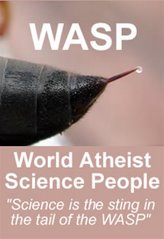 The result comes from a sky survey by the VLA in New Mexico |
It is empty of both normal matter - such as galaxies and stars - and the mysterious "dark matter" that cannot be seen directly with telescopes.
The "hole" is located in the direction of the Eridanus constellation and has been identified in data from a survey of the sky made at radio wavelengths.
The discovery will be reported in a paper in the Astrophysical Journal.
Previous sky surveys that have traced the large-scale structure of the nearby Universe have long shown, for example, how the clustering of galaxies is strung into vast filaments and sheets that are separated by great gaps.
But the void discovered by a University of Minnesota team is about 1,000 times the volume of what would be expected in typical cosmic gaps.
"It's hard even for astronomers to picture how big these things are," conceded Minnesota's Professor Lawrence Rudnick.
"If you were to travel at the speed of light, it would take you several years to get to the nearest stars in our own Milky Way galaxy; but if you were to go to this hole and enter one side, you'd have to travel for a billion years before you would get to the other side," he told BBC News.
The void is roughly 6-10 billion light-years away and takes a sizeable chunk out of the visible Universe in its direction.
Dark evidence
The team used data from the US National Radio Astronomy Observatory's VLA Sky Survey (NVSS) to make its discovery. The VLA - which stands for Very Large Array - is a collection of 27 radio telescopes in New Mexico.
The finding is said to fit neatly with observations of the Universe's "oldest light" - the famous Cosmic Microwave Background (CMB) radiation, the study of which has earned several scientists the Nobel Prize.
This is the radiation that comes from just 380,000 years after the Big Bang when the Universe had cooled to such a degree that hydrogen atoms could exist. Before that time, scientists say, the Universe would have been so hot that matter and light would have been "coupled" - the cosmos would have been opaque.
Today, this light shines at microwave wavelengths at a frigid -270C; and observations of the CMB made by Nasa's Wilkinson Microwave Anisotopy Probe show a particular "cold spot" in the direction of the newly identified void. ![]()

![]()
The explanation for this may lie in the enigmatic "dark energy" that scientists know so little about but which is said to be accelerating the expansion of the Universe.
Light particles passing through the void would be expected to lose a little more energy than those passing through space cluttered with matter - if dark energy is stretching the Universe apart at a faster and faster rate.
Scientists refer to this as the Integrated Sachs-Wolfe Effect and a corresponding "warm spot" in the CMB associated with an area of space dominated by a supercluster of galaxies was identified some years ago.
"In essence, this latest study gives us a very elegant demonstration of the existence of dark energy in a way which is very convincing," commented Professor Carlos Frenk, the director of the Institute for Computational Cosmology at Durham University, UK.
"We keep getting evidence for dark energy, this component of the Universe which is so dominant, and yet we still have only a tiny glimmer of what it could be."
The reason the void exists is not known. "That's going to be a challenge for people that work on the development of structure in the Universe. It's a very hot topic in the cosmology right now," said Professor Rudnick.







No comments:
Post a Comment